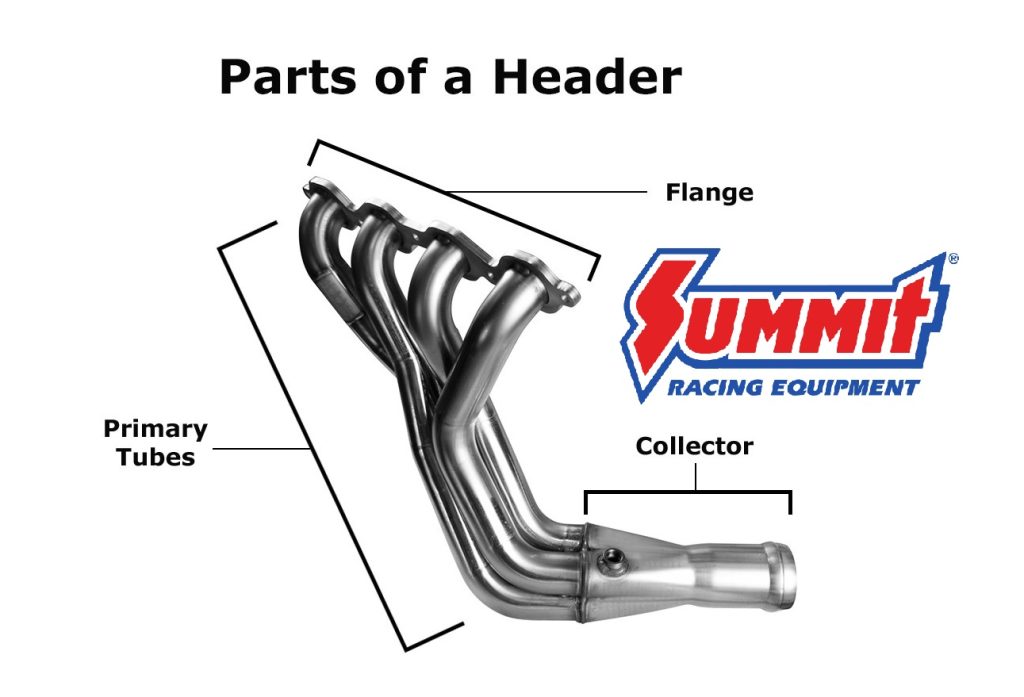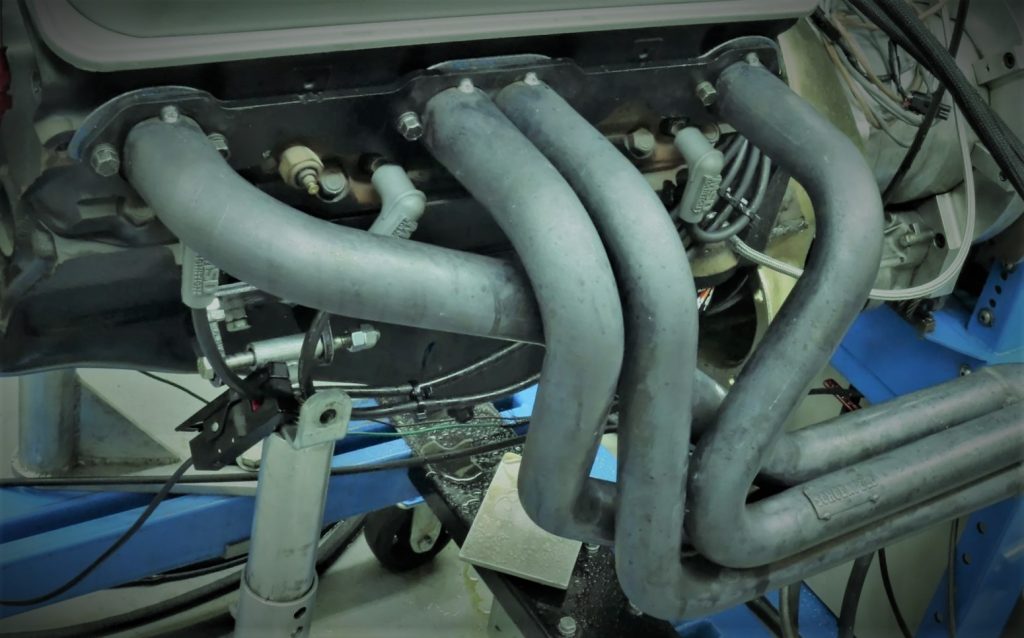Q: How can I figure out if these headers will fit my vehicle?
…
A: Exhaust headers are designed to fit a specific combination of engine and vehicle. Just because a set of headers fit a similar vehicle with the same engine, doesn’t mean it will fit your car.

- The header flange must match the cylinder head bolt pattern.
- It also must accommodate the exhaust port size, shape, and location.
- The primary tubes have to snake around:
- The frame,
- Chassis and suspension parts,
- Mounts and brackets,
- Linkages,
- Etc.
- The collectors have to end up in a place where the rest of the exhaust system can be connected.
Even with the right set of headers, there could still be some interference issues. Some headers will come with dents on the primary tubes to clear the spark plugs. Some may require the use of shorty spark plugs. Some headers may require the use of new alternator or air conditioning brackets.
Many times, worn body mounts or engine mounts can affect the header fitment. The headers could also be affected if the frame is not straight.
When buying headers, pay attention to the following:
- Vehicle year, make, and model,
- Engine type and size,
- 4WD vs. RWD vs. AWD,
- Automatic vs. manual transmission,
- Floor shifter vs. column shifter,
- Read over any notes for other application information.
When installing your headers, be sure to follow the instructions. In many cases, you will need to remove or loosen certain parts to get the headers in place. You may need to make modifications to brackets or mounts to get the headers to fit. You may also need to reroute linkages, wires, and/or hoses so they are not damaged by heat.
…
This is another in a series of weekly Q&A Mailbag sessions with Summit Racing‘s tech department, in which there are hundreds more. Click here to see them all.


[…] Q: How can I figure out if these headers will fit my vehicle? … A: Exhaust headers are designed to fit a specific combination of engine and vehicle. Just because a […] Read full article at http://www.onallcylinders.com […]
I Always found headers a real pain in the neck! And yes…m you get what you paid for.
I’ve installed quite a few set’s and I don’t personally recommend them. Cheapies aren’t worth it, they always tend to leak. Huggers or shorties you have to become a magician to hook up an exhaust system too. I also found a stock manifolds with a custom 2 1/4 inch exhaust system all away throughout is just as beneficial and a lot less headaches. And YES-LOUD PIPES SAVES LIVES….. You can achieve this with a pair of Glasspacks.
Your right on,been through it all,cheapies,ceramic coated,in and out.not worth the hassle of cooked starters,noise,leaks,pulling the engine half way out to change cooked starters,spark plugs.Unless your just running at the strip,save your money and sanity. Iv seen cars with headers with tubes dimpled half closed to fit,Whats the point of that?
my exhaust header/manifold is 2.5 inches. im currently looking at RSR Exmag which is 60mm. will it fit without and modifications? https://createawikipageforyourbusiness.com/